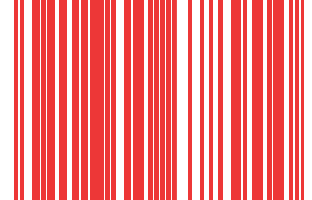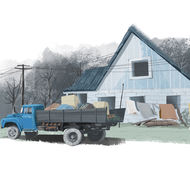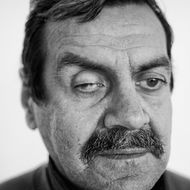Search articles
Search results for
Chart of Truth Commissions
Chart of Truth Commissions by Dr. Nerses Kopalyan for the Transitional Justice white paper.
Chernobyl: The Doctor, the Soldier, the Cook and the Nuclear Disaster
By Arpine Haroyan
The 1986 Chernobyl Nuclear Power Plant accident was considered the worst nuclear disaster in history. It exposed hundreds of thousands of people to high levels of radiation, killing dozens and affecting millions across Europe. Experts from all over the Soviet Union were sent to “liquidate” the effects of the radiation. Among them were several thousand Armenians.
Chez moi
By Lusine Hovhannesyan
In this new essay for the “True But Not Real” creative writing series, writer and journalist Lusine Hovhannisyan explores the love Armenians have for their homes especially in the context of the recent war in Artsakh: “We love our houses with the skill of a person who has lost their home.”
Chez moi
By Lusine Hovhannesyan
Դու հեռանում ես տնից, որ քեզ փրկես ու հետ գաս՝ վստահ լինելով, որ տունը կմնա։ Քեզ փրկում ես, տունը՝ չէ։ Ավելի ճիշտ՝ քեզ տան մեջ չես փրկում, այլ տնից դուրս. chez moi-ն չի փրկվում։ Դու արդեն որտեղ էլ ապրես՝ chez moi չէ։ Մենակ մնացած տներում թշնամու զինվորներ են։ Մենակ մնացած տները սպանել, տանջամահ անել չի լինում։ Մենակ մնացած տները հետևում են անթրաշ զինվորների խրախճանքին։
Children and War Trauma: “We Have to Stop Lying to Them”
By Astrig Agopian
Suren says if he had a magic wand, he would change people to make things better. Children of the 2020 Artsakh War continue to struggle with trauma. A center in Kapan is trying to change that.
“Children, Can You Hear Me?”
By Gohar Abrahamyan
Teachers, students and parents are all trying to cope with the transition to online education. Gohar Abrahamyan reveals some of the successes and challenges.
Children in the Hands of an Abusive Father: The Popular Movement, the RPA, and Armenia’s Constitutional Crisis
By Nerses Kopalyan
Armenia is facing its greatest challenge since independence. Nikol Pashinyan’s Velvet Revolution has left the ruling Republican Party facing a crisis of legitimacy. Nerses Kopalyan writes, “Pashinyan is not seeking to usurp the Constitutional legitimacy of Parliament, but rather, force the majority in Parliament to conform to the will of the popular movement.”
Children: The Hidden Victims of the Pandemic
By Maria Titizian
Over 90 percent of the world’s student population have seen their education interrupted because of the COVID-19 pandemic. While education is the most visible issue, the impact on children cuts much deeper than is being recognized.
Choir in the Dark
By Davit Nersisyan - Mirzoyan Library
Choir in the Dark is the first chapter of photographer Davit Nersisyan’s ongoing, larger body of work about the visually impaired in Armenia. A visual exploration of the persistence of a choir where most members are visually impaired.
Choosing Contentment
By Sara Stites
This is a story about the beautiful complexity and strength of mothers, especially those raising a child with a disability.











